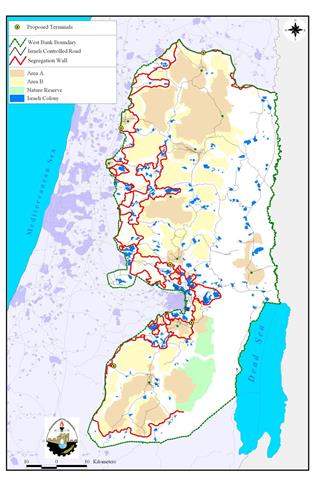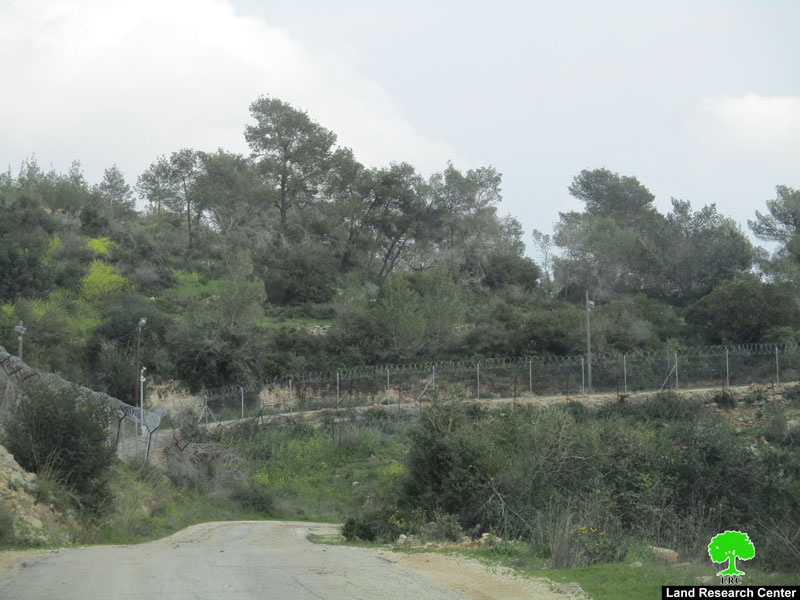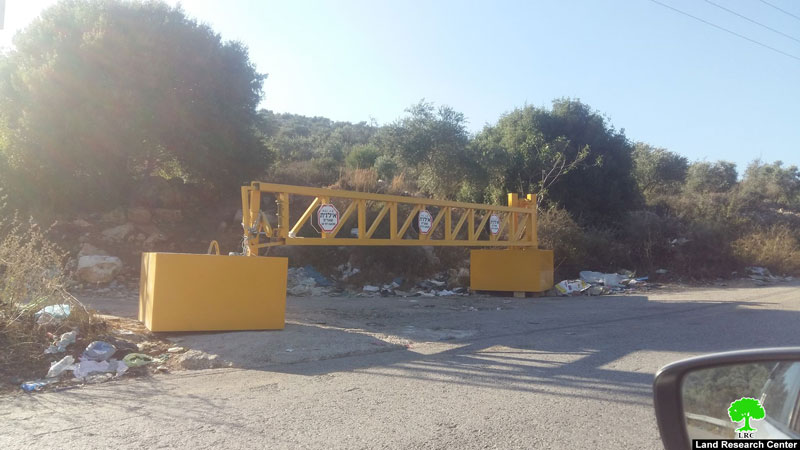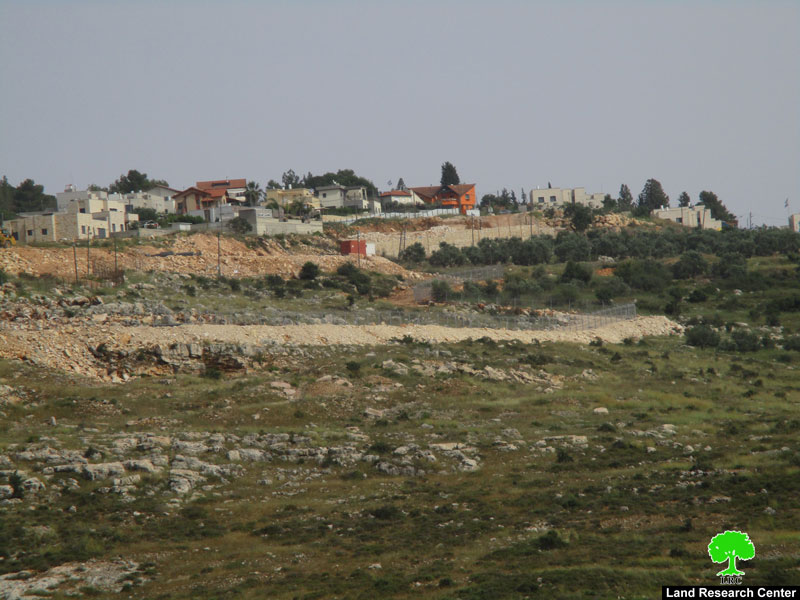'Delineating the borders of the Palestinian state'
At last, Israel unveiled its true intentions of the Segregation Wall built along the West Bank western border and of the entire questionable efforts to negotiate a peace settlement with the Palestinians. This became evident when Israel's Prime Minister Ariel Sharon asked the World Bank President 'James Wolfensohn' during the latter's visit to Israel in the 3rd week of December, to finance Israel's new vision of checkpoints in the occupied West Bank territory. Israel pretext of the new plan is to civilianize the crossing points between Israel and the West Bank in-order to reduce friction between Palestinian citizens and Israeli soldiers at the checkpoints as stated in Haaretzdaily newspaper on December 26, 2004: '.. The IDF will continue to staff military checkpoints, .. , but the major entry points into the territories will be civilianized, and managed according to a uniform service and operation model'.
The new plan for the Israeli checkpoints in the West Bank will alter the Segregation Wall status into a de facto political border; something that Israel refused to admit from the time it started erecting the Segregation Wall, but now it can no longer deny it. According to the Israeli security establishment, the new plan will integrate within the path of the Segregation Wall; setting-up 5 major modernized terminals equipped with state-of-the-art inspection devices to facilitate the movement of Palestinian citizens and goods. See Map 1 of Terminals along the path of the Segregation Wall..
Furthermore, Israel will establish 40-60 smaller versions of the terminals along the route of the Segregation Wall to facilitate trading by employing ''back to back'' system.
The five large terminals Israel is planning to modernize will cost nearly $200 millions; had a ''no-go'' response from the World Bank since the locations of three of the five terminals are on recognized occupied Palestinian territories. In other words, the World Bank objected on the locations of these terminals that incorporate with the route of the Segregation Wall, which the ICJ (international Court of Justice) recently denounced and demanded Israel to dismantle and compensate the damaged parties. The five terminal checkpoints ''envisioned!'' by Israel to serve the '2 million+' Palestinians in the West Bank are:
|
Terminal Name |
District Name |
Districts Served |
PopulationServed |
|
Jalameh |
Jenin |
Jenin, Tubas & Nablus |
635,000 |
|
Sha'ar Ephraim |
Tulkarem |
Tulkarem, Qalqiliya & Salfit |
345,000 |
|
Betunia |
Ramallah |
Ramallah |
290,000 |
|
Mazmuria |
Bethlehem |
Bethlehem& Jericho |
218,000 |
|
Tarqumia |
Hebron |
Hebron |
535,000 |
|
Total |
2,023000 |
||
Israel will implement a similar system of the terminal crossings in Gaza Strip; however, it will establish two large ''civilianized ?'' terminals for transportation of goods in addition to two other miniature versions of the terminals supposedly to facilitate the movement of the 1.4 million Palestinians living in Gaza. (See map 2) )
What Triggered the Truth?
A week earlier to the exposed Israeli vision of the changes to come on the Segregation Wall, a senior US official conveyed at a private meeting with Jewish community leaders that the US administration adopted a new policy to resolve the Palestinian-Israeli conflict, which involves dismantling of all Israeli settlements located east of the Segregation Wall. Even though this message might billboard a departure sign to the 51,500 Israeli settlers living in 64 Israeli settlements between the eastern and western Segregation Walls, it certainly sends a clear message to Israel and the 400,000 settlers living in 145 settlements within the eastern and western Segregation Walls that they are there to stay. See Map of Proposed Eastern Segregation Zone
This version of the newly adopted US policy to the Palestinian-Israeli conflict were comments made by Elliot Abrams, a senior director at the National Security Council and President's Bush top strategist on the Middle East conflict. The policy has in-fact echoed President Bush's letter of assurance made to Israel's Prime Minister Sharon on April 14, 2004. In his letter to Sharon, Bush stated that he would not expect Israel to withdraw to the 1967 borders in light of the new realities and gave consent to Israel unilateral Segregation plan, which include Israel's retention of six settlement blocks. However, Bush did not explicitly express his new policy toward settlers residing on the eastern side of the Segregation Wall but only referred to the settlements located on the western side of the Wall as realities that the Palestinians have to live with. At the risk of causing commotion that may postpone the Gaza disengagement, neither the Israeli government nor the US administration are willing to address such a scenario in the open, but evidence of Israel copping with the idea is on the move. In his letter to Sharon, Bush stated that he would not expect Israel to withdraw to the 1967 borders in light of the new realities and gave consent to Israel unilateral Segregation plan, which include Israel's retention of six settlement blocks. However, Bush did not explicitly express his new policy toward settlers residing on the eastern side of the Segregation Wall but only referred to the settlements located on the western side of the Wall as realities that the Palestinians have to live with. At the risk of causing commotion that may postpone the Gaza disengagement, neither the Israeli government nor the US administration are willing to address such a scenario in the open, but evidence of Israel copping with the idea is on the move.
During the year 2004, Israel managed to expand 41 settlements' areas by 6.8 Km2 and build 24840 new housing units in 56 Israeli settlements. The majority of the settlements' expansions '70% (4.76 Km2)', took place in 28 Israeli settlements '49.5% (3.37 Km2)' of which are located in 19 settlements west of the Segregation Wall and '20.5% (1.39 Km2)' along with 9 settlements situated in the eastern segregation zone. Table below details the expansion of the Israeli settlements area
|
Total Settlement Expansion |
# of settlements |
Area out of Total expansion |
|
28 Israeli settlements: 70% (4.76 Km2) of settlements total area. |
19 west of the Segregation Wall |
49.5% (3.37 Km2) |
|
|
9 situated in the eastern segregation zone |
(20.5% (1.39 Km2)) |
|
Total |
28 |
70% (4.76 Km2) |
ARIJ GIS Database 2004
As for the 24840 housing units, 17688 (71.2%) took place in 35 Israeli settlements, 15936 housing units (64.1%) of which are located in 26 Israeli settlements west of the Segregation Wall and 1752 housing units (7.1%) in 9 Israeli settlements located along the eastern segregation zone. The following charts indicate settlements expansion and new housing units in relation to the Segregation Wall. Table below details the distribution of housing units in the 35 Israeli Settlements.
|
subtotal (out of 24840) |
number of Settlements |
Housing units |
|
35 settlements encompassing 17688 (71.2%) housing units |
26 Israeli settlements west of the Segregation Wall |
15936: (64.1%) |
|
|
9 Israeli settlements located along the eastern segregation zone |
1752: (7.1%) |
|
Total |
35 |
(17688): 71.2% |
ARIJ GIS Database 2004
This is a clear indication that Israel does not have the intention of evacuating the settlements or the settlers' population but merely relocating them to the newly expanded and established settlements areas where according to President Bush became a de-facto reality the Palestinian must accept.
Prepared by:
The Applied Research Institute – Jerusalem

















